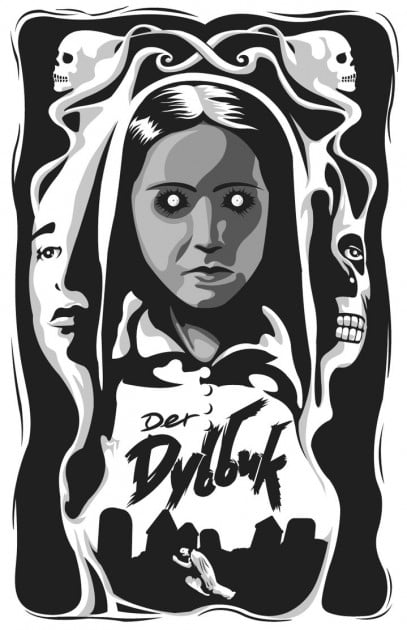Don’t be a Schmegeggy—Learn About Yiddish!
Everybody knows a little bit of Yiddish, if only from Woody Allen movies or that Spamalot song, “You Won’t Succeed On Broadway If You Don’t Have Any Jews.” Some of the greatest words and phrases adopted by the English language  actually migrated over from Yiddish: bagel, kvetch, chutzpah, blintz, schmuck, schlub, schmooze, schtick, klutz, glitch, mazel tov! And then a few others are words that English hasn’t quite assimilated yet, but absolutely should: nosh, meaning smack, used as a noun or a verb. Nudnik, meaning a pest or a bore. Schmegeggy, an idiot. Schmaltz, excessive sentimentality, literally melted chicken fat. Schlimazel, a chronically feckless or unlucky person. Meshuggener/meshuggeneh, a crazy man/woman. If it seems like many of the best Yiddish words are insults and complaints, that is no coincidence. A language born from a culture of exile and persecution, lamentation is built into its core. According to Kelsey Osgood, “Yiddish is to dissatisfaction what Italian is to romance.”
actually migrated over from Yiddish: bagel, kvetch, chutzpah, blintz, schmuck, schlub, schmooze, schtick, klutz, glitch, mazel tov! And then a few others are words that English hasn’t quite assimilated yet, but absolutely should: nosh, meaning smack, used as a noun or a verb. Nudnik, meaning a pest or a bore. Schmegeggy, an idiot. Schmaltz, excessive sentimentality, literally melted chicken fat. Schlimazel, a chronically feckless or unlucky person. Meshuggener/meshuggeneh, a crazy man/woman. If it seems like many of the best Yiddish words are insults and complaints, that is no coincidence. A language born from a culture of exile and persecution, lamentation is built into its core. According to Kelsey Osgood, “Yiddish is to dissatisfaction what Italian is to romance.”
But what exactly is Yiddish? Few in the community of goyim are entirely sure where it came from and whether it’s a dialect, a collection of colloquialisms, or a full-blown language. Basically, Yiddish is a hybrid Germanic language with strains of Hebrew, Aramaic, and Slavic plus some Romance vocabulary added in. Originally spoken by the Ashkenazi Jews who migrated to the Rhineland and then Eastern Europe around the 10th century AD, Yiddish has evolved and adapted to every culture and society where Jewish communities have taken root. Eastern Yiddish, for example, has taken on more characteristics of the Slavic language family, while Western Yiddish leans more toward the Germanic. To this day, scholars are arguing on whether Yiddish counts as an independent language or as a dialect of German, whether it can be classified as Judeo-German or Judeo-Slavic or neither. While Yiddish has sparked some controversy among various secular Zionists who want Hebrew to be the sole language used by Jews, other more religious types view Hebrew as a language to be reserved for prayer and study. Currently, there are more than 1.5 million speakers of Yiddish worldwide.
In the United States, given large Jewish populations predominantly in New York and Florida, Yiddish is a thriving language with a dynamic movement of arts and literature. The three classic writers in the Yiddish language who are hailed as best conveying the spirit and sensibility of Jewish culture are Sholem Yankem Abramovitsh, Sholem Rabinovitsh, and I. L. Peretz. These three writers narrated as alter-egos of themselves in their novels, embracing a style of black humor as they used their writing to deal with the great catastrophes undergone by Jewish people throughout the 19th and 20th centuries.

While the heyday of Yiddish literature was around 1900-1940, it remains popular in areas of the United States, particularly in New York City. Yiddish theater has a particularly strong tradition, with its Golden Age being in the years leading up to 1920—S. Anskv’s Gothic celebration of Old World folklore and customs, The Dybbuk, remains an enduring play and has been translated into various languages. Nearly a century after its founding, the Folksbiene theater company in New York City remains an active artistic presence on the Yiddish theater scene, producing both plays written and translated in Yiddish. And while Yiddish still remains a fringe language in most countries, its influence on adjacent cultures has been enormous.
Do you have any experience with Yiddish language or culture?
